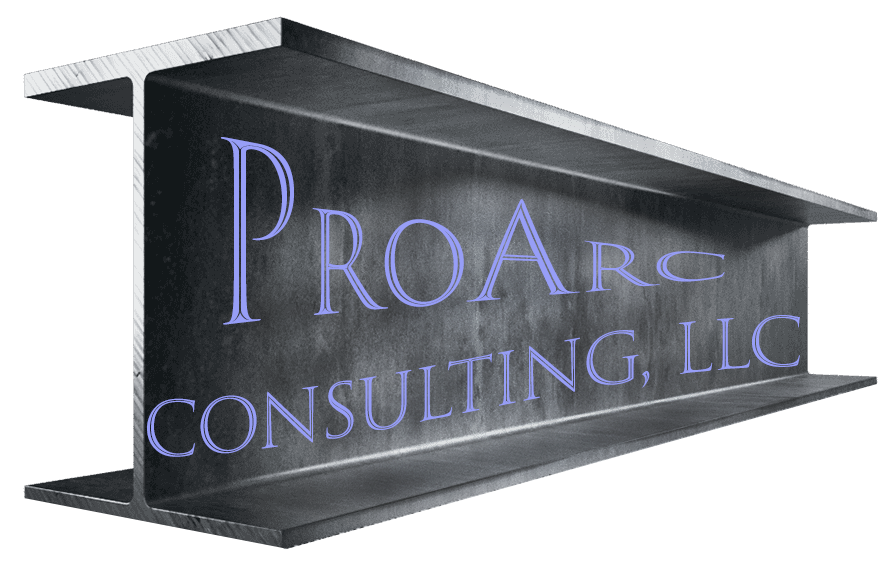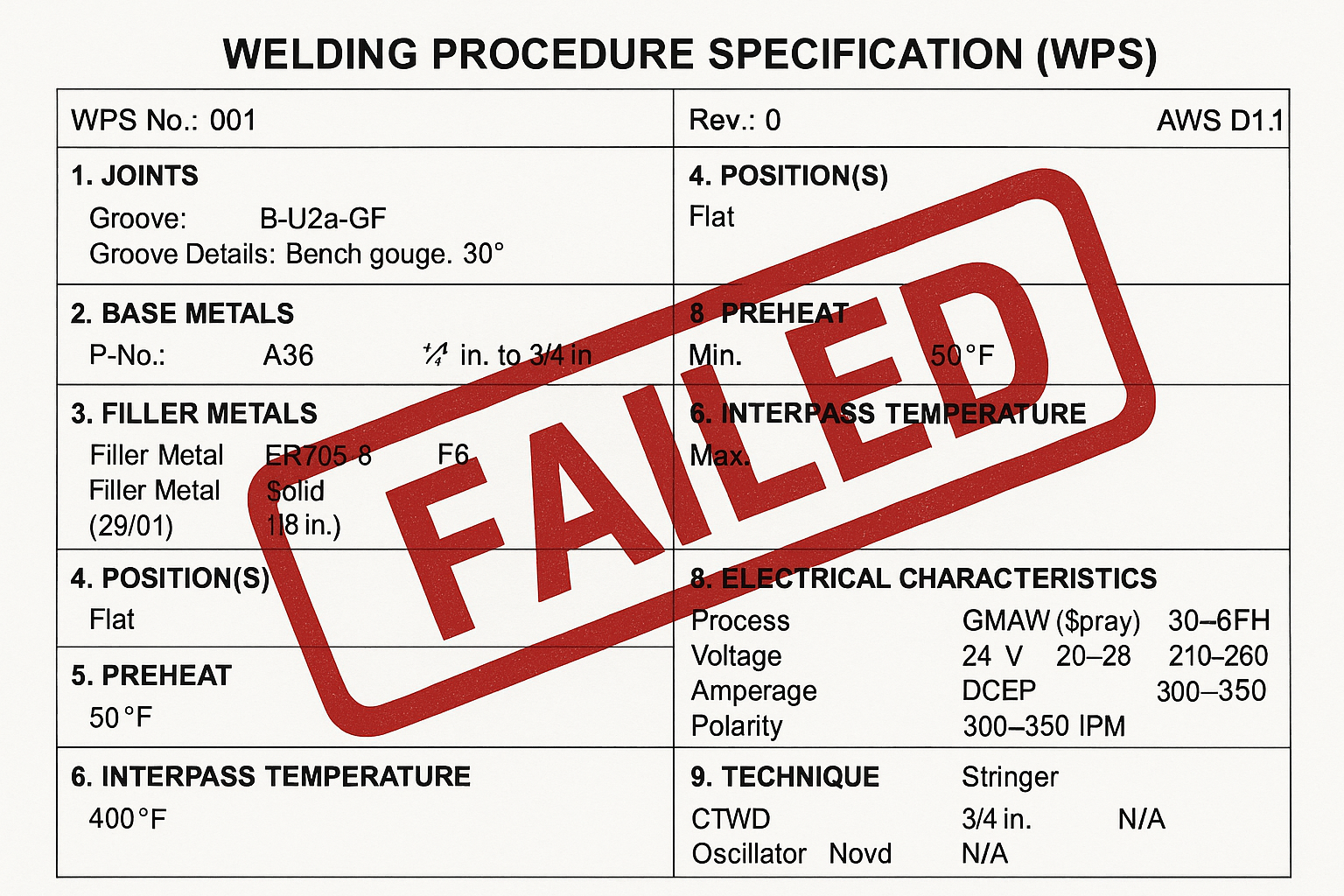When a welding procedure fails, projects stall, money is wasted, and reputations take a hit. Many fabricators treat Welding Procedure Specifications (WPS) as paperwork instead of the foundation of a welding program. Because of that mindset, mistakes are repeated across jobs and the same failures show up during inspections.
The reality is simple: most weld procedures fail not because welders can’t weld, but because the procedure wasn’t built right from the start. Let’s break down why that happens and how to fix it before it costs you.
Copy-and-Paste WPSs Don’t Work
One of the biggest mistakes made by shops is the reuse of generic WPSs. A procedure gets pulled from a previous project or downloaded from the internet, and it’s expected to satisfy code requirements for the current job.
That approach rarely works. Codes like AWS D1.1 Structural Welding Code define essential variables that must be followed. If the procedure doesn’t match the base metals, joint design, or welding process actually being used, the WPS is invalid.
When this happens, inspectors reject the procedure. Crews sit idle, production stops, and a scramble begins to create a real WPS under pressure. A welding consultant prevents this problem by writing procedures that are specific to the job, the code, and the materials being welded.
👉 Related Service: Welding Procedure Services
Lack of Proper Qualification Testing
Even when a procedure looks correct on paper, unless it’s prequalified, it must be backed by a Procedure Qualification Record (PQR). Too often, shops skip or shortcut this step. Weld coupons aren’t tested, mechanical results aren’t recorded, or testing is done without proper supervision.
When qualification is missing, procedures fail immediately. Without tensile strength, bend, or Charpy V-notch data, a WPS has no proof that it can perform in real-world conditions.
Consulting ensures that qualification tests are performed correctly, results are documented, and the WPS is supported by solid data. This builds credibility and prevents costly failures during review.
Welders Are Not Qualified Correctly
Even a flawless WPS fails if welders aren’t qualified to it. A common mistake is qualifying welders under different conditions and then assuming those qualifications carry over to other jobs.
For example, a welder qualified on flat groove welds in mild steel isn’t automatically qualified for vertical welds on thicker members. If an inspector asks for documentation and it doesn’t match, welds can be rejected no matter how good they look.
A welding consultant prevents this by overseeing Welder Performance Qualification (WPQ) testing. Records are accurate, test positions are matched, and continuity logs are kept. With that system in place, welders are always backed by valid qualifications.
👉 Related Service: Welder Qualification Testing
Missing or Weak Documentation
Welding procedures don’t fail only at the weld bench — they fail in the office too. Documentation is often scattered across binders, lost in filing cabinets, or stored on someone’s laptop with no backup. When an audit or client review happens, missing paperwork triggers findings, delays, and sometimes project shutdowns.
A strong documentation system keeps WPSs, PQRs, and WPQs organized and traceable. Calibration logs, filler metal certifications, and inspection reports are also aligned. Welding consultants specialize in setting up these systems so records are available on demand.
👉 Related Service: Quality Assurance Services
The Cost of Failed Procedures
When procedures fail, the costs pile up fast:
- Delays — Crews wait while new procedures are written and qualified.
- Rework — Welds are ground out and re-done at high labor cost.
- Audit Findings — Missing records trigger corrective actions.
- Liability — If welds fail in service, lawsuits and penalties follow.
Each of these issues is avoidable. The investment in proper weld consulting is always smaller than the cost of failed procedures.
How to Get It Right the First Time
Getting weld procedures right isn’t complicated, but it requires discipline:
- Write job-specific WPSs that align with AWS, ASME, or project codes.
- Qualify procedures with proper PQR testing under the correct conditions.
- Oversee welder qualifications to ensure every welder is backed by valid documentation.
- Keep organized records so procedures, tests, and certifications are easy to verify.
- Audit your system regularly so gaps are found before an inspector points them out.
This process saves time, money, and reputation. Projects run smoothly, welders work with confidence, and clients trust that the job is being done right.
The Bottom Line
Most weld procedures fail because they are rushed, recycled, or poorly documented. The solution is straightforward: treat welding procedures as critical, not optional.
With a professional welding consultant, procedures are created correctly, qualified with proper testing, and backed by organized documentation. Welders are supported, inspections are passed, and costly failures are avoided.
👉 Protect your project from failed procedures: Contact ProArc Consulting today.


One reply on “Why Weld Procedures Fail Without a Welding Consultant”